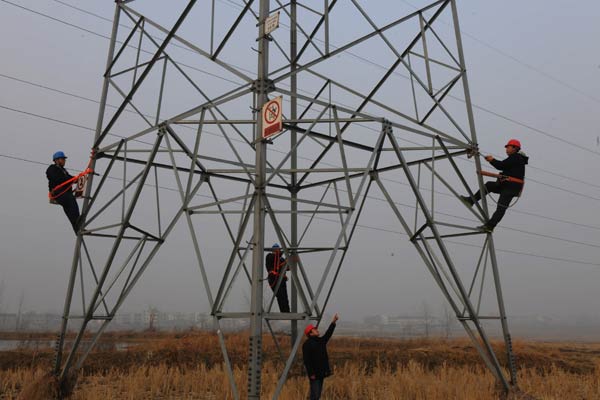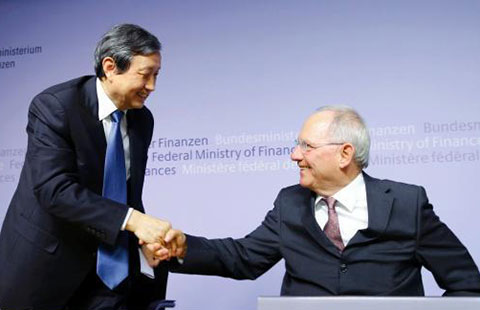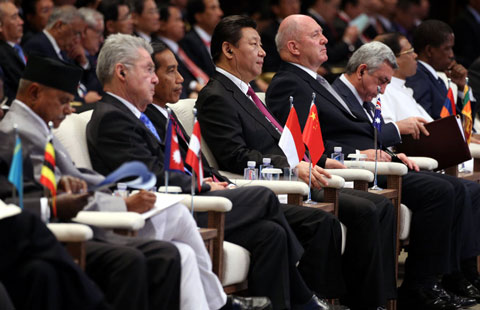Energy supply-demand imbalances 'an urgent problem'
By CUI JIA/DU JUAN (China Daily) Updated: 2015-03-06 07:31NEA head says that producing regions increasingly seek help to sell resource output
 |
|
Workers check power grid device in Dingyuan county, Chuzhou city, East China's Anhui province, Feb 17, 2015. [Song Weixing/for China Daily] |
Weakening energy consumption amid an economic slowdown means that China must urgently resolve internal imbalances in supply and demand, said a senior official on Thursday.
Nur Bekri, head of the National Energy Administration, the top energy planner, told China Daily that local government officials from energy-rich provinces are increasingly seeking his help in selling their output-the biggest change he has seen since he switched roles in December.
Bekri was the chairman of the resource-rich Xinjiang Uygur autonomous region in northwestern China before being appointed as head of the NEA and deputy chief of the National Development and Reform Commission, the country's top economic planner.
He said that in the past, it was usually big energy users such as provinces in eastern China that came to the NEA for approval to buy more coal, power and gas from producing regions such as Shanxi, Sichuan and the Inner Mongolia autonomous region.
Affected by the country's economic slowdown and consumption-driven growth transformation, energy demand, especially power consumption in some provinces, is weakening.
According to the NEA, the growth of average consumption of primary energy is expected to drop to 3.4 percent annually through 2020 and about 2.3 percent by 2030.
In recent decades, energy use grew about 7.9 percent annually.
The softening of demand is already being felt. For instance, Chu Yanfang, deputy general manager of the Sichuan subsidiary of State Grid Corp of China, the largest power provider, said that hydropower-rich Sichuan has total installed generation capacity of 78.74 million kilowatts, but the peak load in the province is only 37.2 million kW.
- Israel requests to join Asian Infrastructure Investment Bank
- Chinese stocks rebound on April 1
- China, the West in Africa: more room for cooperation than competition
- Nanjing cuts taxi franchise fees
- Air China increases flights to Milan, Paris
- JD.com raises delivery charges
- Veteran corporate strategist upbeat about China economy
- L'Oreal China sales revenue up 7.7% in 2014

















